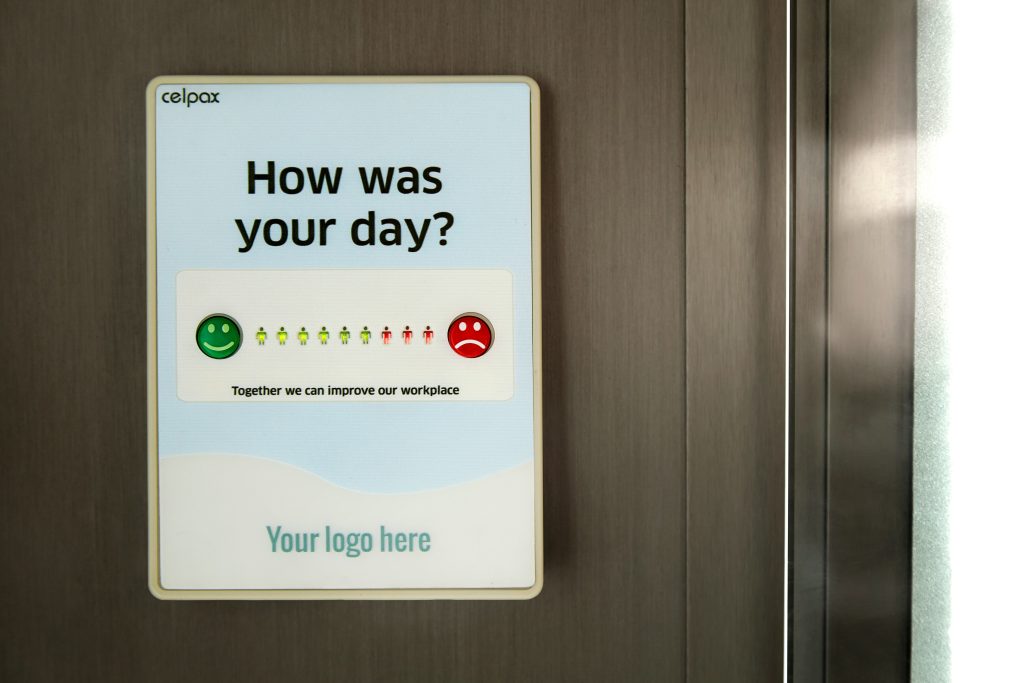Energizing Your Workforce: How Employee Engagement Creates Thriving Businesses

Have you ever wondered why some businesses seem to have staff who genuinely care about their work, while others struggle with constant turnover and disinterest? The difference often comes down to one critical factor: employee engagement. For small and medium-sized businesses, creating an engaged workforce isn’t just a nice-to-have—it’s essential for survival and growth in a competitive marketplace.
Employee engagement represents the emotional commitment employees have to their organization and its goals. When employees are engaged, they’re not just working for a paycheck or the next promotion; they’re working on behalf of the organization’s objectives. They care about their work and their company, and that enthusiasm drives performance in ways that surface-level satisfaction simply cannot match.
Throughout this article, we’ll explore the fundamentals of employee engagement, why it matters for your business, and practical strategies you can implement regardless of your company size or budget. Whether you’re an HR manager looking to revitalize your workforce or a business owner seeking to build a more committed team, these insights will help you transform your workplace culture and boost your bottom line.
What Employee Engagement Really Means
At its core, employee engagement represents the emotional investment workers make in their organization. It’s about creating conditions where employees want to give their best each day and are committed to their organization’s goals and values.
Beyond Job Satisfaction
Many business owners mistakenly equate job satisfaction with engagement. While related, these concepts are distinctly different:
- Job satisfaction measures how content employees are with their job conditions, compensation, and benefits. An employee might be perfectly satisfied with their paycheck and comfortable office chair but still put in minimal effort.
- Employee engagement measures emotional commitment and discretionary effort. Engaged employees go above and beyond because they care about the company’s success.
Consider this real-world example: Green Valley Grocers, a family-owned chain of three local supermarkets, struggled with high turnover and lackluster customer service despite offering competitive wages. After conducting employee interviews, the owners discovered that their staff felt disconnected from the business’s purpose and didn’t see how their individual contributions mattered.
By implementing regular team meetings where they shared business updates, celebrated employee contributions, and solicited ideas for improvement, Green Valley transformed their workforce. Within six months, turnover dropped by 40%, customer satisfaction scores improved, and employees began proactively suggesting operational improvements that ultimately saved the business money.
This transformation didn’t happen because employees suddenly became more satisfied with their compensation—it happened because they developed an emotional stake in the company’s success.
Why Employee Engagement Should Be Your Priority
The benefits of fostering engagement extend far beyond simply having happier employees. Let’s examine the concrete advantages for both organizations and their staff.
Organizational Benefits
Research consistently shows that businesses with highly engaged employees outperform their competitors across multiple metrics:
- Productivity: Engaged employees are 17% more productive than their disengaged counterparts
- Profitability: Companies with high engagement scores show 21% higher profitability
- Customer satisfaction: Engaged employees create better customer experiences, leading to higher loyalty and spending
- Innovation: When employees care about their company, they’re more likely to suggest improvements and creative solutions
- Retention: Engaged workplaces experience 59% less turnover, saving substantial recruitment and training costs
Cornerstone Consulting, a mid-sized business services firm, provides a compelling case study. After implementing a comprehensive engagement strategy, they not only reduced their turnover rate from 22% to 7% but also strengthened their employer brand. Their enhanced reputation in the marketplace helped them attract higher-quality candidates while spending 35% less on recruitment advertising. Within two years, they were recognized as a “Best Place to Work” in their region, further amplifying their ability to attract talent.
Benefits for Employees
Engagement isn’t just good for business—it significantly improves employees’ professional and personal lives:
- Greater job satisfaction: Engaged employees find meaning in their work and derive more satisfaction from it
- Better mental and physical health: Studies show engaged employees experience less stress and fewer health problems
- Professional growth: Engaged employees typically receive more development opportunities and advance more quickly
- Stronger workplace relationships: Engagement fosters better team dynamics and more supportive work environments
- Work-life balance: Contrary to what some might expect, engaged employees often report better work-life balance because they work more efficiently and experience less workplace stress

Key Drivers of Employee Engagement
Understanding what truly drives engagement is essential for creating effective strategies. Let’s examine the fundamental factors that influence how connected employees feel to their work and organization.
Leadership and Management
The relationship between employees and their immediate supervisors is perhaps the single most important factor in engagement. Leaders set the tone for the entire organization through their:
- Communication style: Transparent, consistent communication builds trust
- Vision and direction: Clear goals help employees understand how their work contributes to bigger objectives
- Accessibility: Leaders who make themselves available and listen to concerns foster engagement
When Sarah took over as CEO of a struggling local manufacturing company, employee morale was at an all-time low. Rather than making sweeping changes immediately, she spent her first month holding small group meetings with every employee. She asked about their challenges, listened to their ideas, and shared her vision for the company’s future.
This approach—demonstrating respect for employees’ insights while providing clear direction—transformed the company culture. Within a year, production efficiency improved by 23%, and voluntary turnover dropped dramatically. As one employee put it, “For the first time, I feel like management actually cares what I think.”
Meaningful Work
Employees who understand how their individual contributions impact the organization and its customers are significantly more engaged. This sense of purpose comes from:
- Clear connection to mission: Understanding how daily tasks support larger organizational goals
- Customer impact: Seeing how work positively affects end users or customers
- Values alignment: Working for an organization whose values match personal beliefs
Consider Miguel, a customer service representative at a small medical supply company. Initially, he viewed his job as simply answering phones and processing orders. When the company began sharing stories of patients who benefited from their products and invited customers to occasional team meetings, Miguel’s perspective transformed. Knowing that his attention to detail could impact someone’s health outcomes gave his work profound meaning. His performance metrics improved dramatically, not because of increased supervision but because he now cared deeply about doing his job well.
Growth and Development
Employees who see opportunities to learn and advance within your organization are more likely to invest emotionally in its success:
- Learning opportunities: Both formal training and informal learning experiences
- Regular feedback: Constructive input that helps employees improve
- Career advancement: Clear paths for progression within the organization
Riverfront Credit Union implemented a successful internal mobility program despite their modest size (120 employees). They created skill-building workshops, cross-training opportunities, and mentorship programs that allowed employees to develop capabilities beyond their current roles. They also prioritized internal promotions, with 78% of management positions filled from within over a three-year period.
The result? Employee retention increased by 35%, and engagement scores rose across all departments. Even employees who didn’t immediately advance appreciated the investment in their development and the potential for future growth.
Recognition and Rewards
Acknowledging employee contributions is a powerful engagement driver:
- Timely recognition: Immediate acknowledgment of achievements
- Meaningful appreciation: Recognition that reflects understanding of the employee’s efforts
- Fair compensation: Pay and benefits that reflect market value and individual contributions
Recognition doesn’t always require large budgets. Woodland Manufacturing, a small cabinet maker with 45 employees, created a “Craftsman of the Month” program that highlighted exceptional work. The winner received a dedicated parking spot, a small cash bonus ($100), and most importantly, had their work showcased to customers with their name prominently displayed. This simple program dramatically increased quality across the workshop as employees took greater pride in their craftsmanship.
Positive Workplace Culture
The overall environment and relationships at work significantly impact engagement:
- Psychological safety: Feeling safe to express ideas and make mistakes
- Inclusivity: Valuing diverse perspectives and making everyone feel welcome
- Supportive relationships: Positive interactions with colleagues and managers
When TechSpark, a growing software development company, expanded from 15 to 50 employees in 18 months, they feared losing their close-knit culture. They proactively addressed this by establishing core values that emphasized collaboration, creating cross-functional project teams, and implementing regular team-building activities. They also instituted “culture interviews” in their hiring process to ensure new employees would contribute positively to the environment.
Despite their rapid growth, employee surveys showed that 92% of staff felt the company maintained a supportive culture where they could do their best work. This strong foundation allowed them to attract talent away from larger competitors offering higher salaries.

Practical Strategies to Enhance Employee Engagement
Now that we understand the key drivers of engagement, let’s explore actionable strategies you can implement in your business.
Clarify and Communicate Your Mission
Employees can’t align with your organization’s purpose if they don’t understand it:
- Review your company mission statement to ensure it’s meaningful and inspiring
- Regularly communicate how everyday work connects to larger organizational goals
- Share customer success stories that demonstrate the impact of your products or services
A local accounting firm transformed their mission from the generic “providing quality accounting services” to “helping small businesses thrive through financial clarity and support.” This more meaningful purpose was then reinforced in team meetings, where they shared specific examples of how their work helped local businesses overcome challenges and grow.
Create Open Communication Channels
Two-way communication is essential for engagement:
- Hold regular town halls where leadership shares updates and answers questions
- Implement suggestion systems that acknowledge and respond to employee ideas
- Conduct stay interviews to understand what keeps employees engaged
A manufacturing company with 75 employees implemented monthly “coffee with the owner” sessions where small groups could ask questions and share concerns in an informal setting. These conversations revealed operational inefficiencies that employees had been hesitant to mention through formal channels. Addressing these issues improved both productivity and engagement.
Prioritize Employee Well-being
Demonstrate that you value employees as people, not just workers:
- Offer flexible work arrangements where possible
- Provide resources for mental and physical health
- Respect boundaries between work and personal time
A retail business with multiple locations noticed increasing stress among store managers. By implementing a scheduling system that allowed managers to indicate preferred working hours and implementing a policy against non-emergency contact during off hours, they saw dramatic improvements in manager satisfaction and performance.
Develop Effective Managers
Since direct supervisors have such a strong impact on engagement, investing in their development is crucial:
- Provide leadership training focused on communication and coaching skills
- Hold managers accountable for their teams’ engagement levels
- Recognize and reward managers who excel at building engaged teams
A distribution company implemented a quarterly “engagement leadership” training program for all supervisors and managers. The program focused on practical skills like providing constructive feedback, recognizing contributions, and supporting employee development. Departments led by managers who completed the program showed engagement scores 24% higher than those with untrained managers.
Create Growth Opportunities
Help employees develop new skills and advance within your organization:
- Establish clear career paths with defined skill requirements
- Provide cross-training opportunities between departments
- Offer learning stipends or time for professional development
Even with limited resources, small businesses can support growth. A local marketing agency created “skill swap” sessions where team members taught each other their specialties. This not only developed employees’ capabilities but also improved collaboration between previously siloed functions.
Recognize and Appreciate Contributions
Make recognition a regular part of your culture:
- Implement peer recognition programs where employees can acknowledge colleagues
- Celebrate both individual and team achievements
- Ensure recognition is specific, timely, and meaningful
A healthcare provider implemented a simple digital recognition platform where staff could send “appreciation notes” to colleagues. These notes were visible to the entire organization and tracked for monthly recognition. The program cost less than $2,000 annually but generated significant improvements in team morale and cross-departmental cooperation.
Build a Diverse and Inclusive Environment
Create a workplace where everyone feels valued:
- Review hiring practices to eliminate bias
- Ensure all employees have equal access to opportunities
- Create forums where diverse perspectives are actively sought and respected
A small technology company realized their team lacked diversity in several dimensions. They partnered with local community colleges and non-traditional training programs to expand their talent pipeline, implemented blind resume reviews, and created structured interview processes to reduce bias. Within 18 months, they built a more diverse team that brought fresh perspectives and ultimately created better products for their increasingly diverse customer base.
Encourage Team Building and Collaboration
Foster strong relationships between colleagues:
- Organize team activities that build connections
- Create cross-departmental projects to break down silos
- Recognize collaborative achievements alongside individual ones
A construction company with multiple project teams implemented monthly cross-team lunches where employees could build relationships outside their immediate workgroups. These connections led to improved knowledge sharing and collaboration on projects, reducing costly errors and delays.
Empower Employees with a Voice
Give employees meaningful input into decisions that affect their work:
- Include front-line staff in process improvement discussions
- Allow teams to influence how they achieve their goals
- Demonstrate that employee input leads to actual changes
A small hotel empowered their housekeeping staff to redesign their daily workflow. The resulting process was more efficient than what management would have created because it incorporated the staff’s practical experience. More importantly, the housekeepers became more engaged because they had ownership of their work process.
Provide the Right Tools and Resources
Ensure employees have what they need to succeed:
- Invest in technology that makes work more efficient
- Eliminate unnecessary administrative burdens
- Ask employees what resources would help them perform better
A landscaping company provided their crew leaders with tablets containing client information, property maps, and the ability to document completed work with photos. This investment not only improved efficiency but also reduced frustration and made employees feel more professional and valued.
Promote Work-Life Balance
Show respect for employees’ personal lives:
- Create reasonable expectations about after-hours availability
- Offer flexible scheduling where possible
- Encourage the use of vacation time
A small law firm implemented a policy where employees could adjust their start and end times to accommodate personal needs, provided they were available during core business hours. This simple flexibility dramatically improved retention of valuable team members with family responsibilities.
Measure and Monitor Engagement
You can’t improve what you don’t measure:
- Conduct regular engagement surveys (at least annually)
- Use pulse surveys for more frequent feedback on specific topics
- Analyze patterns in turnover, absenteeism, and productivity

Measuring Employee Engagement Effectively
To improve engagement, you need reliable data about your current state and progress over time.
Survey Techniques
Effective engagement surveys balance depth with participation:
- Keep surveys reasonably brief (15-20 minutes maximum)
- Include both rating scales and open-ended questions
- Ensure anonymity to encourage honest feedback
- Communicate results and action plans to employees
Effective survey questions might include:
- “I understand how my work contributes to the organization’s goals”
- “My manager provides useful feedback on my performance”
- “I have opportunities to learn and grow in this organization”
- “I would recommend this company as a great place to work”
Beyond Surveys
While surveys provide valuable data, other metrics can offer additional insights:
- Turnover rates (especially voluntary departures)
- Absenteeism and tardiness patterns
- Customer satisfaction scores
- Productivity metrics
- Participation in optional company events or initiatives
Regular Check-ins
Supplement formal surveys with ongoing conversations:
- Conduct “stay interviews” asking what keeps employees with your organization
- Use pulse surveys (3-5 questions) to check on specific aspects of engagement
- Train managers to have regular career development discussions with their team members

Understanding Different Engagement Levels
Not all employees engage with their work and organization in the same way. Understanding these different levels can help you tailor your approaches.
Actively Engaged Employees
These employees demonstrate strong emotional commitment and consistently go above and beyond. They typically:
- Show enthusiasm for their work and the organization
- Proactively solve problems and suggest improvements
- Support colleagues and contribute positively to culture
- Speak positively about the organization to others
- Demonstrate resilience during challenging times
Your goal should be to recognize and support these employees while learning from what drives their engagement.
Not Engaged Employees
These employees put in adequate effort but lack emotional connection to their work. They typically:
- Complete required tasks but rarely volunteer for additional responsibilities
- Show limited initiative or creativity
- Maintain neutral attitudes about the organization
- Focus primarily on their own responsibilities rather than team or organizational goals
This group represents your greatest opportunity for improvement. With the right leadership and environment, many can become actively engaged.
Actively Disengaged Employees
These employees are unhappy and often express their dissatisfaction in ways that undermine colleagues and the organization. They typically:
- Complain frequently and focus on problems rather than solutions
- Resist change and new initiatives
- Negatively influence team morale
- Demonstrate minimal effort and poor quality work
- Show high absenteeism or presenteeism (physically present but mentally absent)
This group requires direct intervention through honest conversations about expectations and fit. Some may improve with the right support, while others may ultimately be better suited elsewhere.
Implementing Your Engagement Strategy
Creating a more engaged workforce requires a systematic approach. Here’s how to move from concept to reality:
Assess Your Current State
Before implementing new initiatives:
- Gather baseline data through surveys and other metrics
- Identify specific engagement drivers and barriers in your organization
- Prioritize areas with the greatest potential impact
A regional insurance broker began by surveying their 65 employees and conducting focus groups to understand engagement barriers. They discovered that while employees appreciated their competitive compensation, they felt disconnected from leadership decisions and saw limited growth opportunities. This insight allowed them to focus their efforts where they would have the greatest impact.
Develop Customized Strategies
Different teams may have different engagement needs:
- Analyze data by department or function to identify specific challenges
- Involve employees in developing solutions for their areas
- Create strategies that address your unique organizational culture
A manufacturing company found that engagement drivers differed significantly between their production and office staff. Production employees valued schedule predictability and input into safety procedures, while office staff prioritized professional development and work flexibility. By tailoring their approaches to each group’s needs, they achieved improvements across the organization.
Communicate and Train
Ensure everyone understands the importance of engagement and their role in improving it:
- Share the business case for engagement with all employees
- Train managers on engagement drivers and their critical role
- Clearly communicate new initiatives and the reasoning behind them
Monitor Progress and Adjust
Engagement improvement is an ongoing process:
- Establish regular check-points to assess progress
- Be willing to modify approaches that aren’t working
- Celebrate and build upon successes
Sustain Engagement Over Time
Avoid treating engagement as a one-time initiative:
- Integrate engagement practices into everyday operations
- Include engagement metrics in regular business reviews
- Recognize and reward leaders who excel at building engaged teams
A technology services firm initially saw great improvement from their engagement initiatives, but noticed scores beginning to slip after about 18 months. By implementing quarterly pulse surveys and making engagement a standing topic in management meetings, they were able to identify and address issues before they became significant problems.

Building Your Engaged Workplace
Employee engagement isn’t just a nice-to-have feature for successful businesses—it’s a fundamental driver of performance, innovation, and growth. The strategies outlined in this article don’t require massive budgets or resources, but they do demand genuine commitment from leadership and consistent implementation throughout the organization.
By focusing on the key drivers of engagement—meaningful work, effective leadership, growth opportunities, recognition, and positive culture—you can create a workplace where employees truly care about their work and your organization’s success.
Remember that engagement is not a destination but a journey. The most successful organizations continuously assess, adjust, and reinforce their engagement practices as their business and workforce evolve.
What steps will you take today to begin transforming your workplace through enhanced employee engagement? We’d love to hear about your experiences and challenges in building a more engaged workforce. Share your thoughts or questions with us, and let’s continue the conversation about creating thriving workplaces where both businesses and employees can reach their full potential.